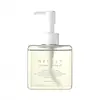What's inside
What's inside
 Key Ingredients
Key Ingredients

No key ingredients
 Benefits
Benefits

 Concerns
Concerns

 Ingredients Side-by-side
Ingredients Side-by-side

Ethylhexyl Palmitate
EmollientSorbeth-30 Tetraoleate
EmulsifyingTriethylhexanoin
MaskingCaprylic/Capric Triglyceride
MaskingOlea Europaea Fruit Oil
MaskingPogostemon Cablin Leaf Oil
MaskingRosmarinus Officinalis Leaf Oil
MaskingCaprylyl Glycol
EmollientCamellia Japonica Seed Oil
EmollientCandida Bombicola/Glucose/Methyl Rapeseedate Ferment
AntimicrobialEthylhexylglycerin
Skin ConditioningArgania Spinosa Kernel Oil
EmollientCamellia Sinensis Seed Oil
HumectantCocos Nucifera Oil
MaskingHelianthus Annuus Seed Oil
EmollientOryza Sativa Bran Oil
EmollientSimmondsia Chinensis Seed Oil
EmollientVitis Vinifera Seed Oil
EmollientWater
Skin ConditioningButylene Glycol
Humectant1,2-Hexanediol
Skin ConditioningSaponaria Officinalis Leaf Extract
AntimicrobialLimonene
PerfumingLinalool
PerfumingEthylhexyl Palmitate, Sorbeth-30 Tetraoleate, Triethylhexanoin, Caprylic/Capric Triglyceride, Olea Europaea Fruit Oil, Pogostemon Cablin Leaf Oil, Rosmarinus Officinalis Leaf Oil, Caprylyl Glycol, Camellia Japonica Seed Oil, Candida Bombicola/Glucose/Methyl Rapeseedate Ferment, Ethylhexylglycerin, Argania Spinosa Kernel Oil, Camellia Sinensis Seed Oil, Cocos Nucifera Oil, Helianthus Annuus Seed Oil, Oryza Sativa Bran Oil, Simmondsia Chinensis Seed Oil, Vitis Vinifera Seed Oil, Water, Butylene Glycol, 1,2-Hexanediol, Saponaria Officinalis Leaf Extract, Limonene, Linalool
Helianthus Annuus Seed Oil
EmollientEthylhexyl Palmitate
EmollientPolyglyceryl-2 Sesquioleate
EmulsifyingPolyglyceryl-3 Caprate
EmulsifyingPolyglyceryl-10 Oleate
Skin ConditioningCocos Nucifera Oil
MaskingLavandula Angustifolia Oil
MaskingLinalool
PerfumingPrunus Armeniaca Kernel Oil
MaskingPrunus Amygdalus Dulcis Oil
Skin ConditioningOlea Europaea Fruit Oil
MaskingCitronellol
PerfumingOlea Europaea Husk Oil
Skin ConditioningGeraniol
PerfumingPelargonium Graveolens Oil
MaskingAbies Sibirica Oil
MaskingTocopherol
AntioxidantOlus Oil
EmollientHelianthus Annuus Seed Oil, Ethylhexyl Palmitate, Polyglyceryl-2 Sesquioleate, Polyglyceryl-3 Caprate, Polyglyceryl-10 Oleate, Cocos Nucifera Oil, Lavandula Angustifolia Oil, Linalool, Prunus Armeniaca Kernel Oil, Prunus Amygdalus Dulcis Oil, Olea Europaea Fruit Oil, Citronellol, Olea Europaea Husk Oil, Geraniol, Pelargonium Graveolens Oil, Abies Sibirica Oil, Tocopherol, Olus Oil
 Reviews
Reviews

Ingredients Explained
These ingredients are found in both products.
Ingredients higher up in an ingredient list are typically present in a larger amount.
Cocos Nucifera Oil is obtained from the kernels of the coconut fruit. In other words, this is coconut oil.
Coconut Oil is rich in fatty acids with lauric acid making up the majority of these. It also contains linoleic acid. Due to this high fatty acid content, coconut oil helps trap moisture and soften skin.
Despite being antibacterial, coconut oil may not be great for acne-prone skin. It is comedogenic and may clog pores. This ingredient may not be safe for malassezia or fungal acne.
Note: Coconut Oil should not replace your sunscreen for UV protection. Studies show it only blocks about 20% of UV.
This oil is non-volatile and has a light scent.
The term 'fragrance' is not regulated in many countries. In many cases, it is up to the brand to define this term. For instance, many brands choose to label themselves as "fragrance-free" because they are not using synthetic fragrances. However, their products may still contain ingredients such as essential oils that are considered a fragrance.
Learn more about Cocos Nucifera OilEthylhexyl Palmitate, also known as octyl palmitate, is created from 2-ethylhexyl alcohol and palmitic acid. It is a fatty acid ester.
The fatty acid content of Ethylhexyl Palmitate makes it an emollient. Emollients help soften and hydrate your skin by trapping moisture within.
Ethylhexyl Palmitate is also used to help improve the texture of cosmetics. It helps other ingredient dissolve in products and help disperse ingredients more evenly.
You'll likely find this ingredient in sunscreen, as it is often used to mix UV-blocking ingredients such as avobenzone and ethylhexyl triazone.
It can also help stabilize the fragrances in a product as a fragrance fixative.
Ethylhexyl Palmitate can be used to substitute mineral oil.
Due to its high fatty acid content, it may not be fungal-acne safe.
Learn more about Ethylhexyl PalmitateHelianthus Annuus Seed Oil is the oil derived from the seeds of a Sunflower. Sunflower seed oil is non-fragrant. It is an emollient, meaning it helps to soften the skin.
Sunflower seed oil contains many fatty acids. The fatty acids found in sunflower seeds include (from highest amount to least): linoleic acid, myristic acid, palmitic acid, stearic acid, arachidic acid, oleic acid, and linolenic acid.
These fatty acids help the skin create ceramides. Ceramides play a role in repairing the skin barrier.
Helianthus Annuus Seed Oil helps moisturize the skin. This in turn helps the skin look more rejuvenated and smoother.
Sunflowers are rich in vitamin E.
Historians believe Indigenous cultures of North America domesticated sunflowers before corn. Thus they relied on sunflower oil for a variety of uses. One such use is moisturizing skin and hair.
Sunflower seed oil may not be fungal acne safe. We recommend speaking with a professional if you have any concerns.
Learn more about Helianthus Annuus Seed OilLinalool is a fragrance and helps add scent to products. It's derived from common plants such as cinnamon, mint, citrus, and lavender.
Like Limonene, this ingredient oxidizes when exposed to air. Oxidized linalool can cause allergies and skin sensitivity.
This ingredient has a scent that is floral, spicy tropical, and citrus-like.
Learn more about LinaloolOlea Europaea Fruit Oil is the fixed oil obtained from the ripe fruit of the Olive. In other words - olive oil.
The primary contents of olive oil are glycerides of the fatty acids linoleic, oleic and palmitic.
Olive oil also contains antioxidants such as Vitamin E. Antioxidants may help reduce signs of aging by fighting unstable free-radical molecules. It also contains Vitamins A (retinol), D, and K.
The squalene in olive oil makes it a great emollient. Emollients help soothe and soften your skin by trapping moisture in. This makes olive oil a great skin moisturizer.
Studies show olive oil to have antibacterial and antifungal properties in low concentrations. Another study found olive oil irritated sensitive oily skin. We always recommend speaking with a professional about using this ingredient in your routine.
Due to the fatty acid content, this ingredient may not be fungal-acne safe.
Learn more about Olea Europaea Fruit Oil